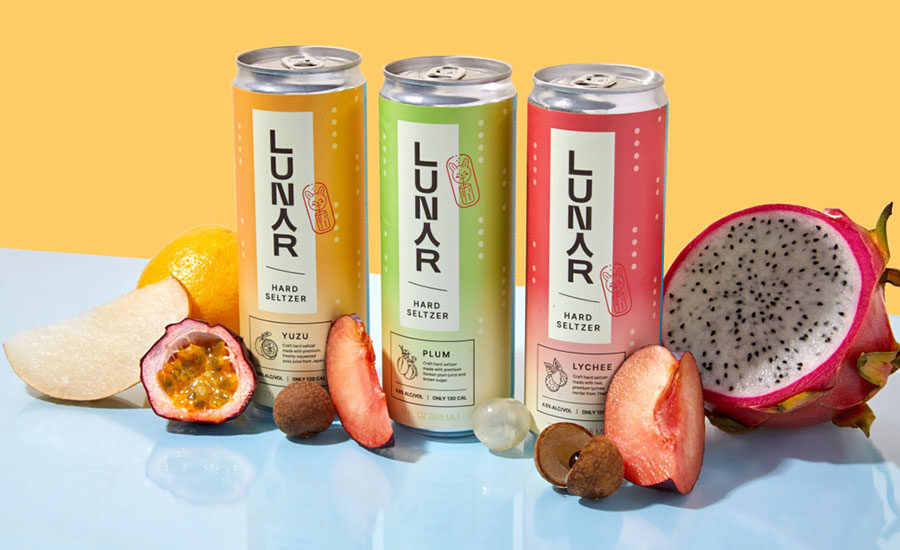Talk to us about the three-tier system.
Since we're an alcohol brand, we only work with distributors. The three-tier system prevents us from doing business directly with retailers.
Technically speaking, we only get purchase orders (POs) from distributors, and our distributors only get POs from retailers; however, we can influence the POs that retailers place with the distributors, and this is where the great brands separate themselves from the average brand.
How do you manage distributor inventory?
We try to have at least one month's worth of inventory at our distributor at all times. If we see a distributor’s stock is low, we’ll send them more product, but thanks to our velocities and strong relationships, our distributors are pretty good at proactively reaching out to us - especially when they expect to receive more POs from retailers during certain times like AAPI Heritage Month.
When your company is in the growth stage, or early stage, it’s really tricky to predict inventory numbers because the numbers are presumably going up every time. It’s a mixture of art and science.
How do you find the right distributors?
You typically go to major accounts and find out what distributors they work with. Perform due diligence on distributors and ask retailers questions. Find out if retailers have a distributor preference and what they like or don’t like about them. Then reach out to that distributor and pitch yourself and the beverage. If the distributor is interested, they’ll take the meeting.
As a brand, it's important to know which retailers the distributor works with, if they have a robust sales force to support your beverage, and what other brands they carry. You don’t want to work with a distributor that is going to treat you like a shiny new object.
It’s honestly like a dating process.
What does it look like when you are beiing treated like a shiny new object?
It's one of those things where you don’t know until it actually happens. If you build solid relationships with retailers, they will tell you which distributors seriously vet new products and which distributors bring in a new, exciting products and then suddenly stop supporting it.
How do you compete against the legacy, big brands?
We work closely with our distributors and their sales reps, but truthfully, the key to our growth has been community and grassroots support.
We’re intentional about the retailers we partner with. The most successful relationships are with retailers that are committed to supporting local brands.

Trader Joe’s stocks Lunar Seltzer. Talk to us about that.
Trader Joe’s has incredible white label products, and they carry an assortment of outside brands in their beer & seltzer category, and Lunar is happy to be a part of that. TJ's has a network of alcohol distributors, which goes back to my point of choosing your distributor wisely.
We have very good product market fit at TJ’s, and it’s actually where most people discover Lunar. We bring something really unique to the shelves!
I always say that consumers' favorite retailers are the Trader Joe’s and Costco’s of the world, but as a brand, those retailers are tough to navigate. They’re either a black box or hold you to a very high standard in order to maintain their consumer reputation.
How do you find out where people discover Lunar?
We do annual brand surveys and anytime we’re doing live samples, demos, or pop ups we ask people how they discovered us.
What's your TPM strategy?
That’s something we’ve been focusing on. Traditionally, our strategy has been grassroots and sponsorship. We took a page out of Brooklyn Brewery’s playbook; they launched in Brooklyn and grew by being a part of local, community events.
We've taken a similar approach and also support events outside the Asian American NYC community. We’ve been a part of some really cool fashion events, creative collectives, music gigs, and more. The data from our annual survey backs it up that this approach is working. After discovering us at Trader Joe’s or Whole Foods, the second most common way people discover Lunar is at an event we sponsored.
What’s your number one piece of advice for beverage brands?
Be judicious with your dollar spend. In industries like food and beverage, purchasing decisions are often driven by emotion rather than logic. When members of the Asian American community see a product like Lunar Seltzer, it taps into the nostalgic flavors of their upbringing, creating a powerful emotional connection.
Rather than relying heavily on advertising or influencers, the best way to understand your product's resonance is to have direct conversations with your target consumers. Ask them about the factors that influence their purchasing decisions in your category. Find out what products they're currently purchasing and consuming. If they aren't buying your product, what are they using as an alternative? What other product will they typically buy your product with?